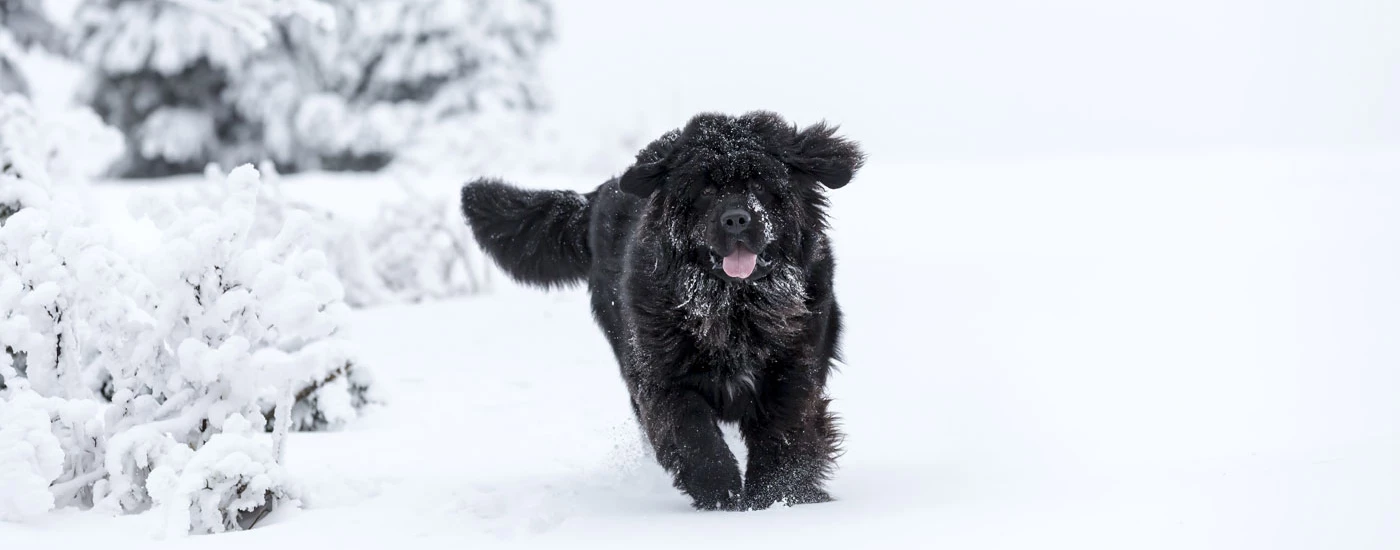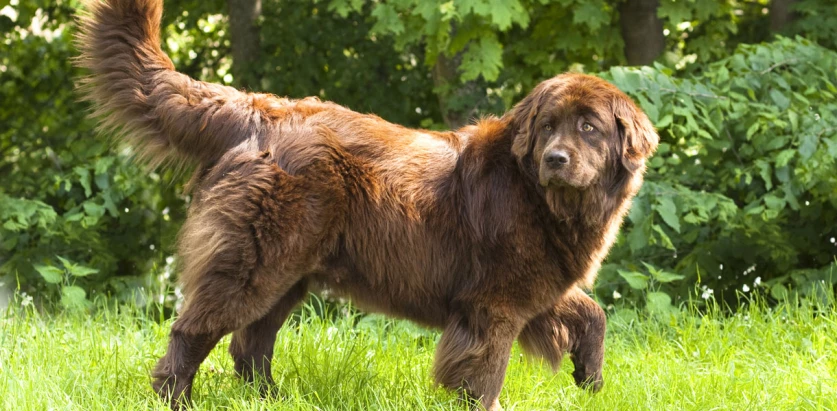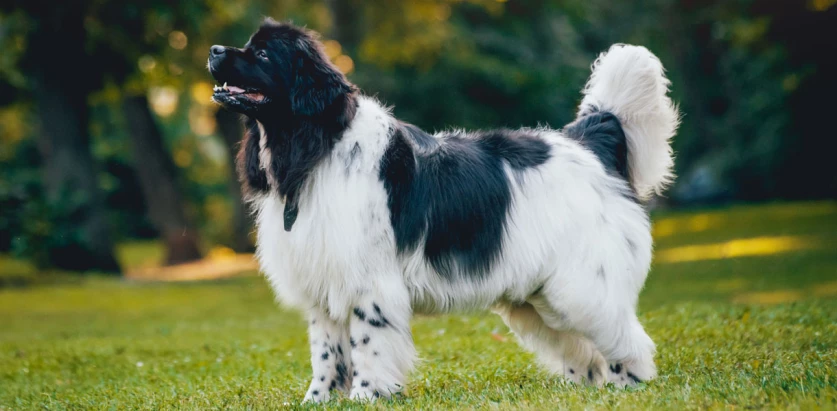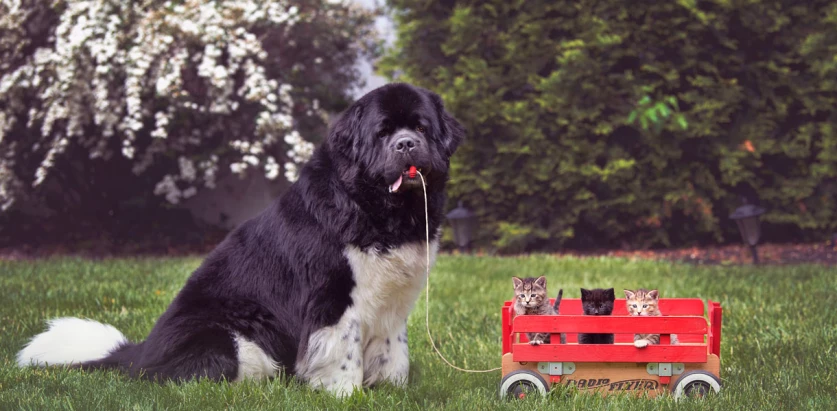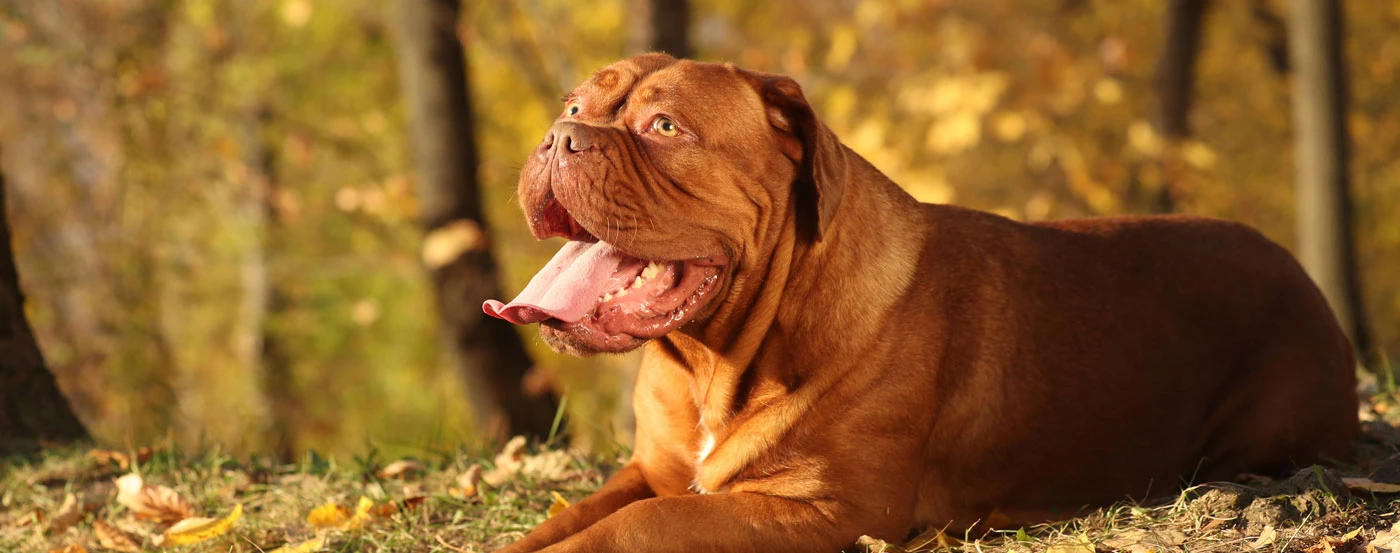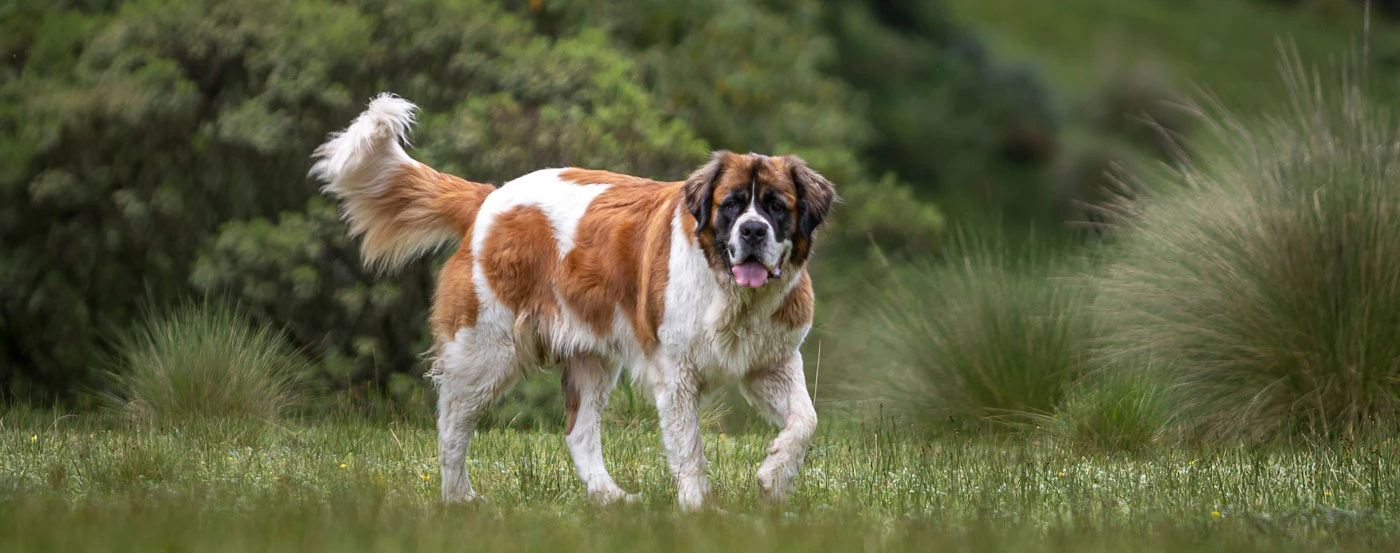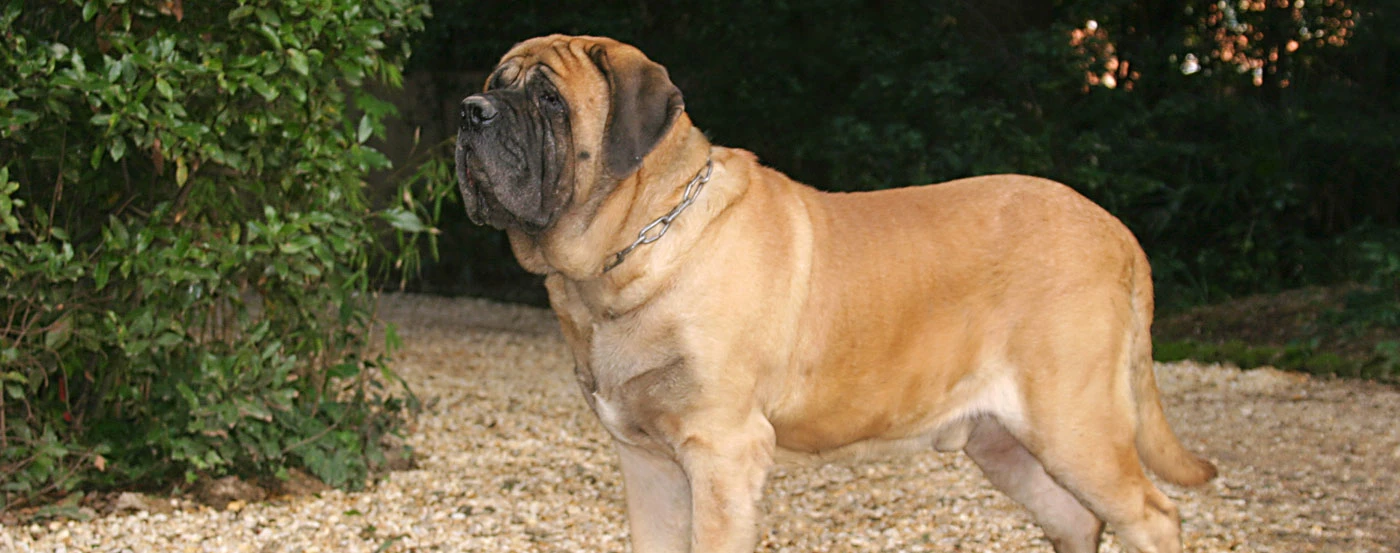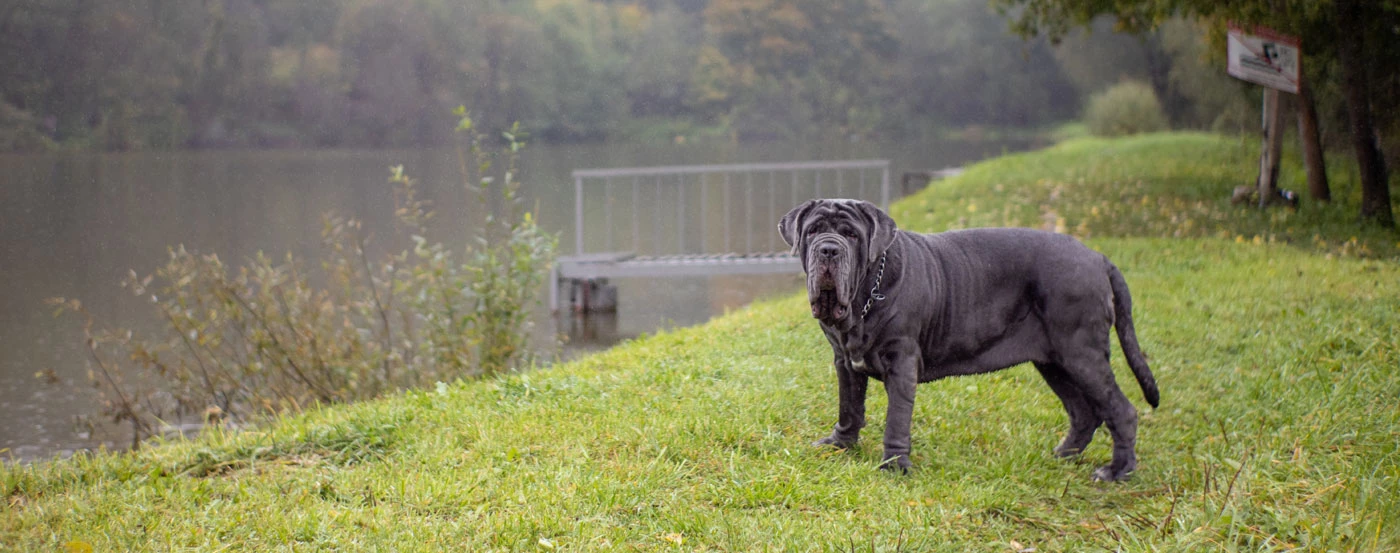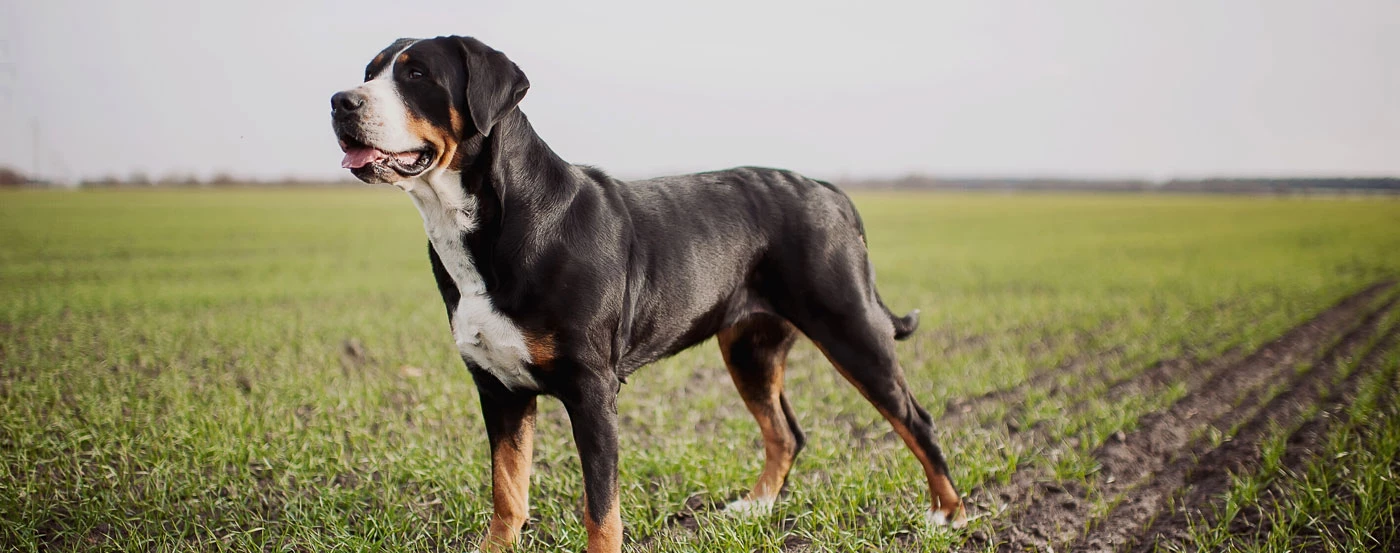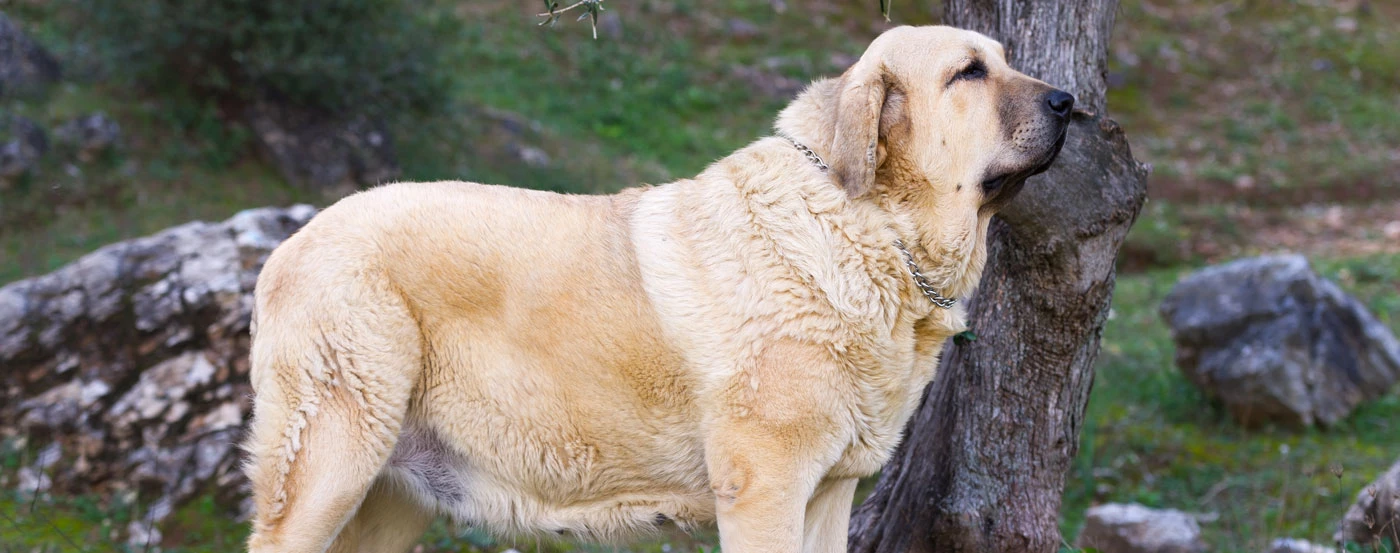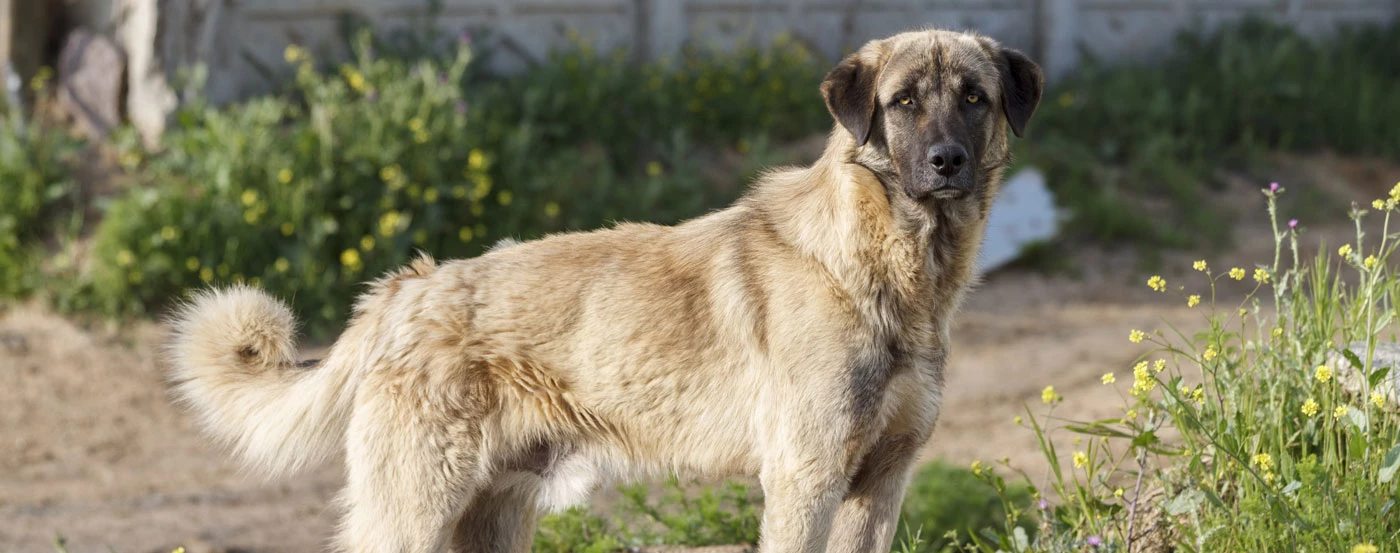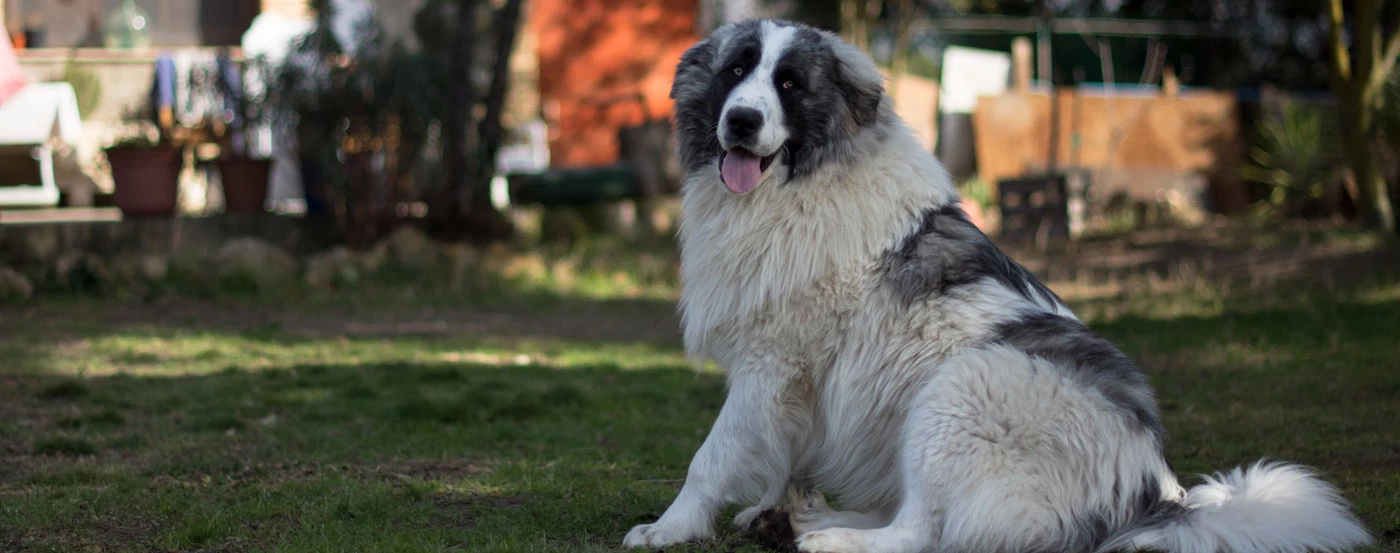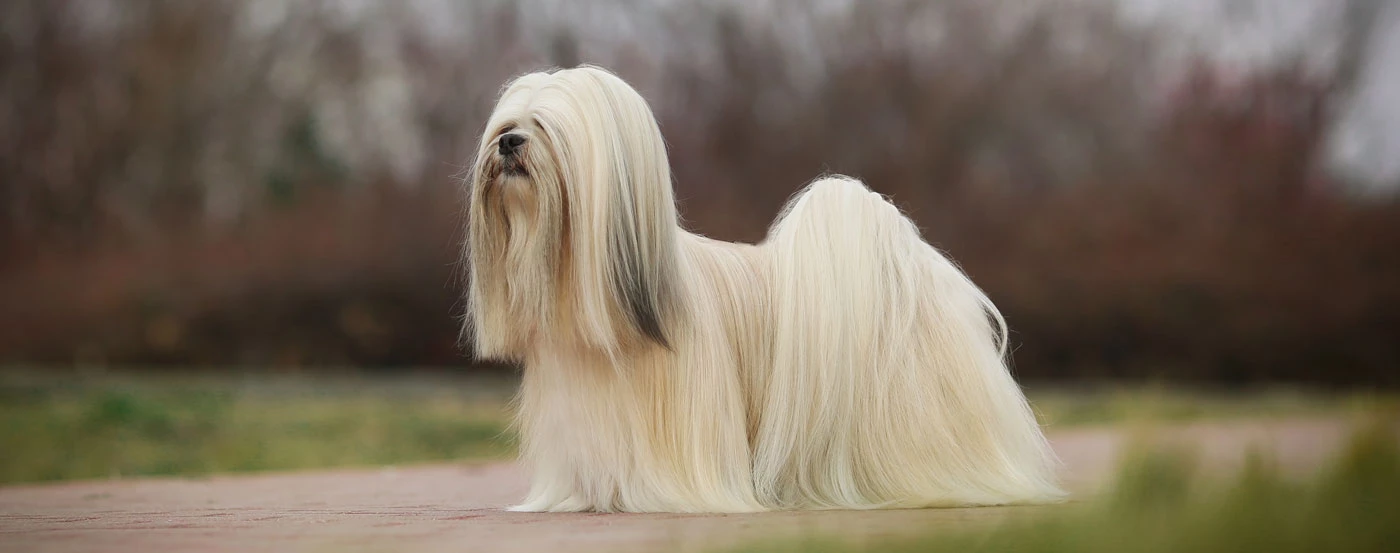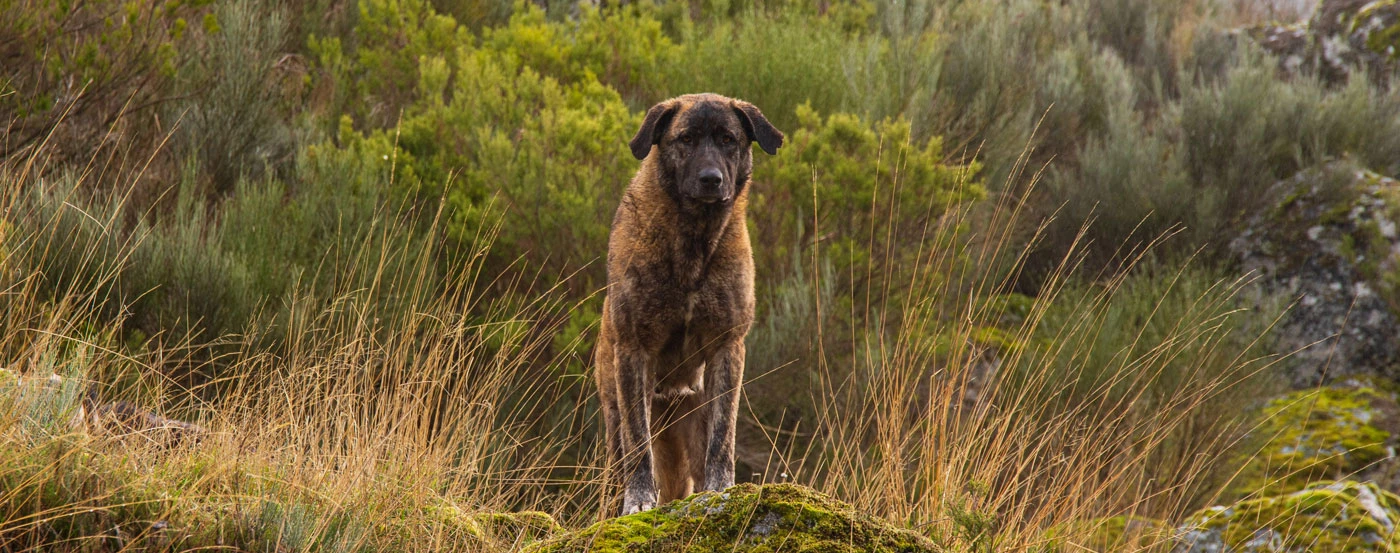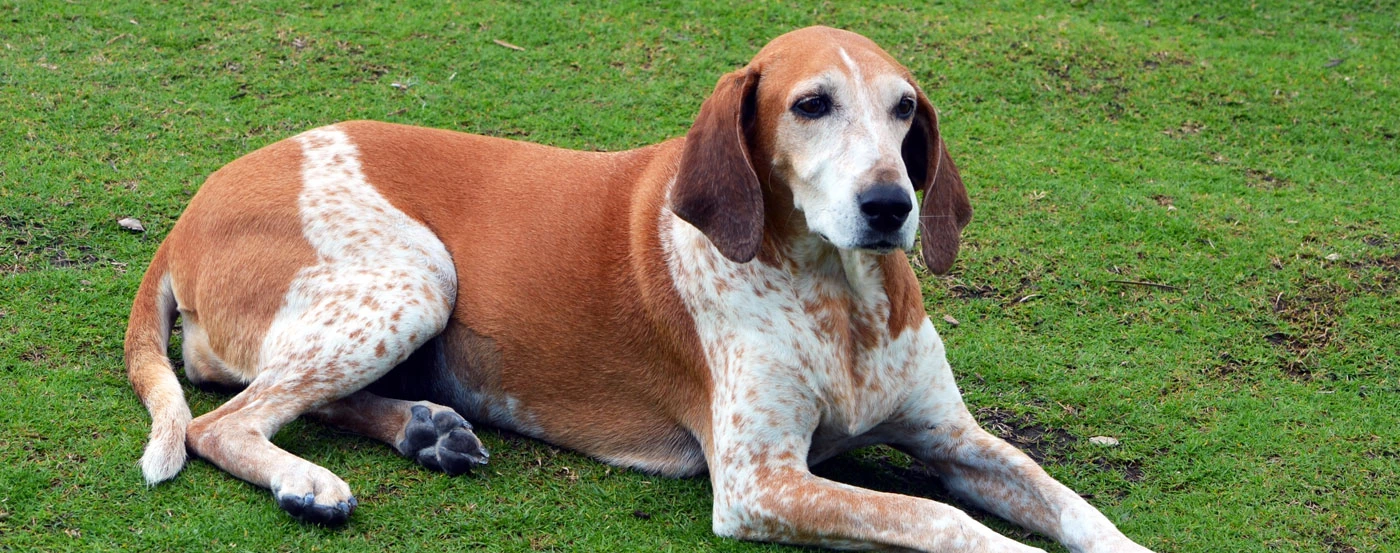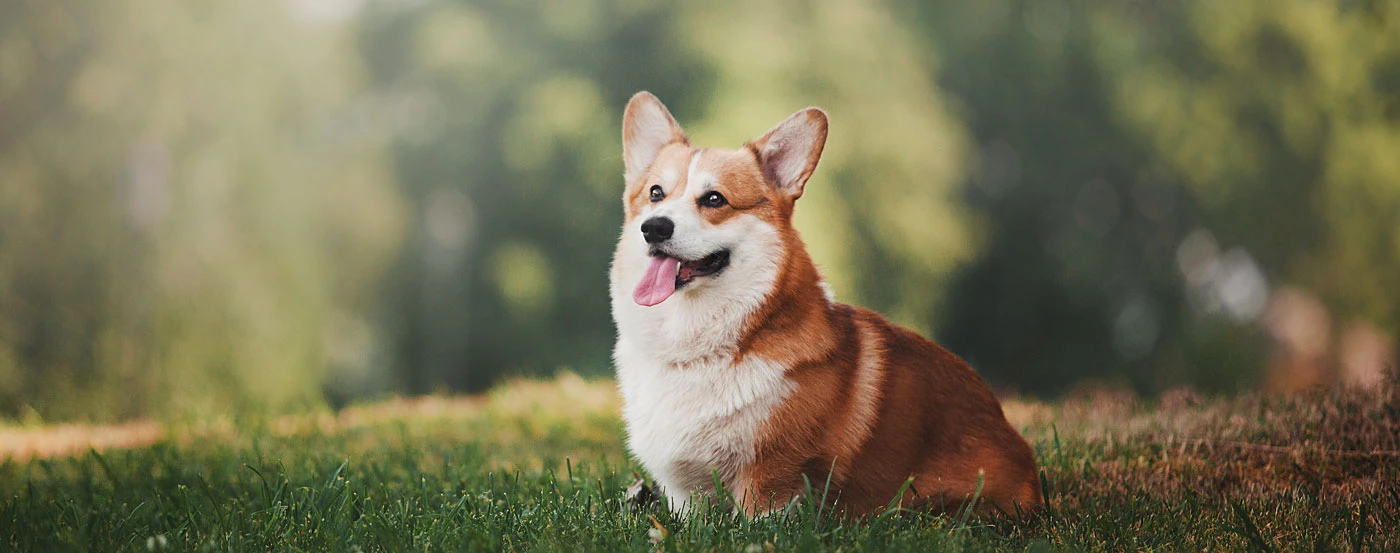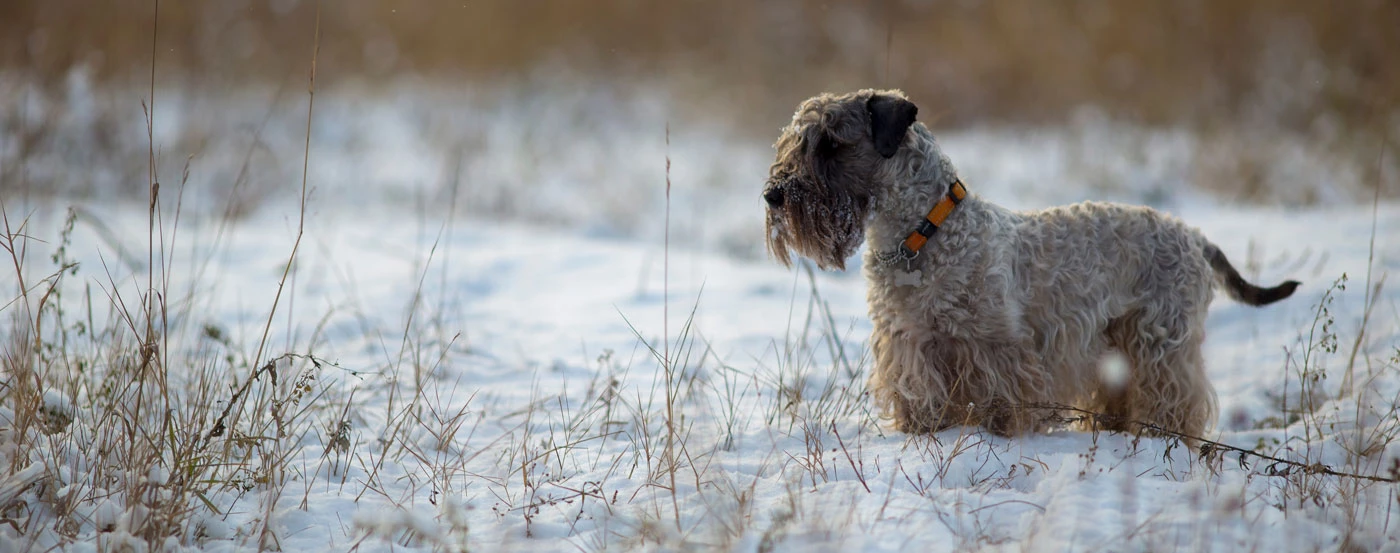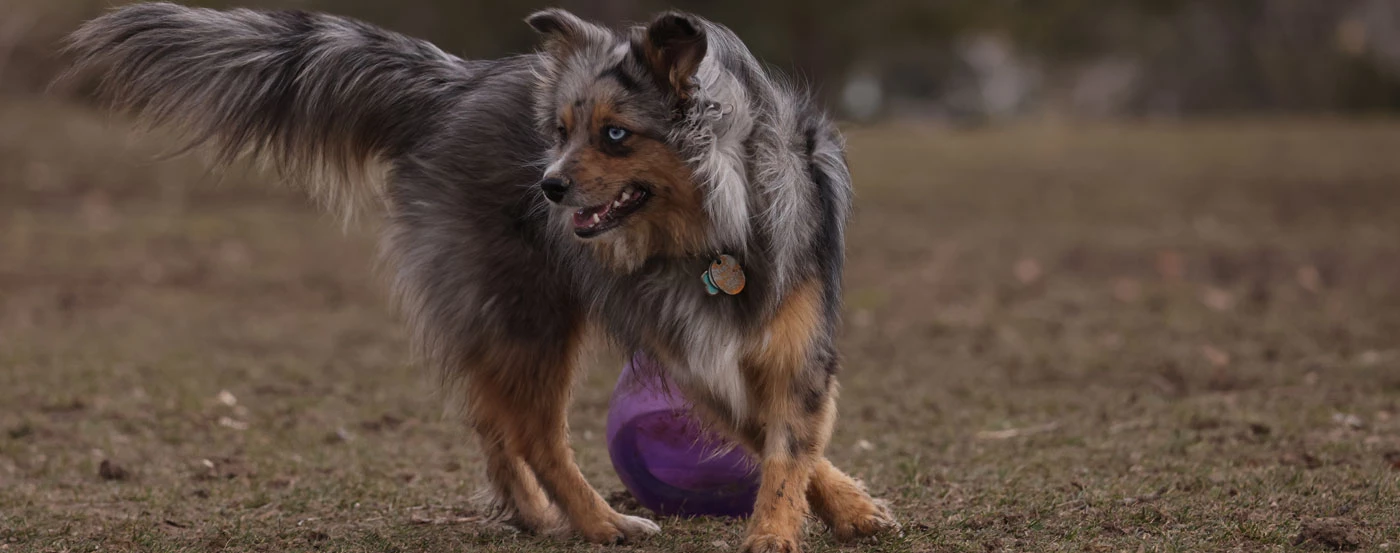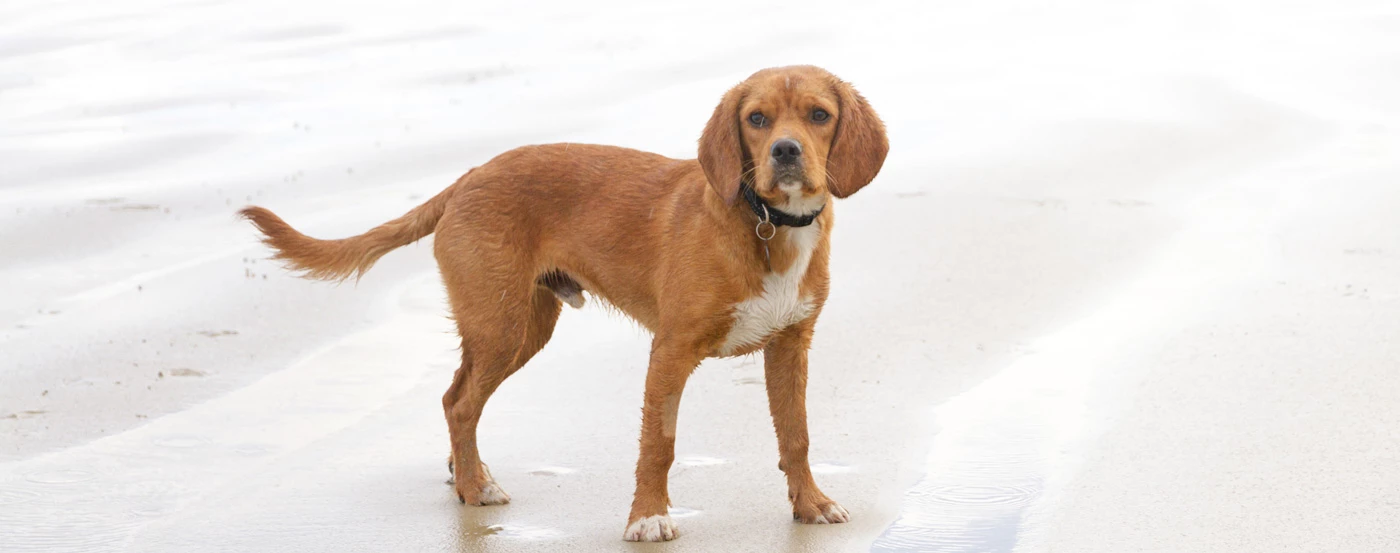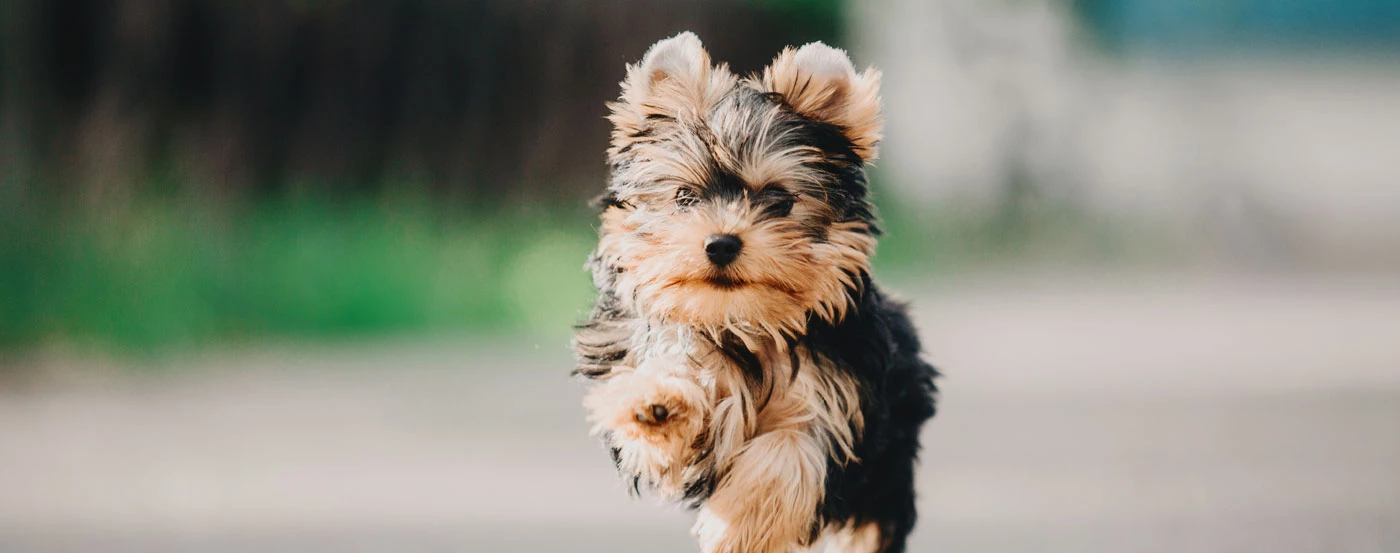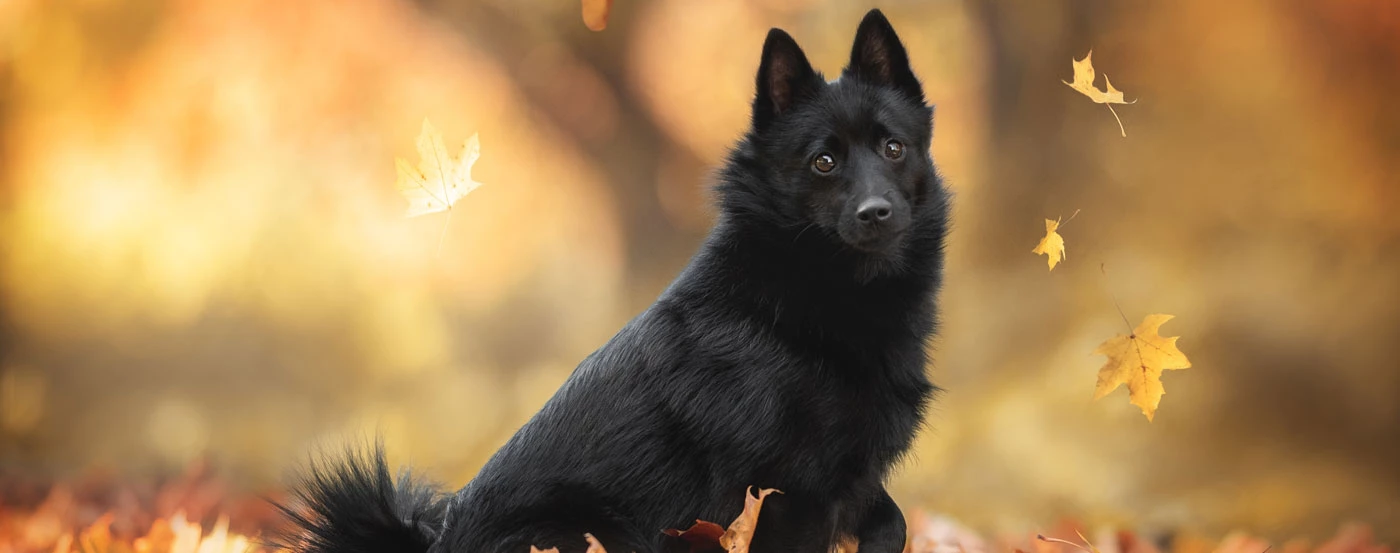About the Newfoundland
J. M. Barrie's Peter Pan introduced us to Nana, arguably the most famous Newfoundland dog in modern English language fiction. You may be wondering if your puppy will be as loyal and patient as Nana was to her charges.
Wonder no more and find out everything you need to know about one of the friendliest dog breeds around, what Newfoundland puppies, adults, and senior dogs need to thrive, and how to prevent and treat potentially life-threatening conditions.
Newfoundland Gallery
What is the history & origin of the Newfoundland?
Genomic analysis has revealed that the Newfoundland breed is closely related to the Irish Water Spaniel and the Labrador Retriever breeds. In the 1880s, Irish and English fishermen bred the original dog on the island of Newfoundland in Eastern Canada.
A related water dog was bred on the neighbouring island of Labrador. This Lesser Newfoundland or St John's Labrador was well suited to water activities.
John Henry Walsh's The Dogs of the British Islands describes another related breed - the Landseer Newfoundland - as "black and white dogs with curly coats and fine heads and frames".
Who are Newfoundland dogs best for?
You don't have to be an avid fisherman or sailing enthusiast to adopt a Newfie pup! However, this breed is best for active, energetic families with children.
Newfs need and enjoy high-energy activities and daily exercise. They have great endurance and are extremely smart, as author Robert Parsons describes in his book The Newfoundland Dog.
Newfoundland dogs are docile, playful, and wonderfully well-behaved with children despite their enormous size and intimidating appearance!
How much grooming does a Newfoundland need?
Grooming your Newfie requires time, effort, and skill. Not too much to ask from one of the most loyal and empathetic dog breeds in the world.
Groom your long-haired double-coated furry friend every five or six weeks by following these steps:
Loosen the coat and de-shed the undercoat by brushing with a pin brush until your dog's coat is very soft to the touch.
Next, get your Newfie in the bathtub and wet their double coat thoroughly.
Use a gentle organic puppy shampoo to avoid any skin irritation. Let the shampoo sit in your dog's coat for about five minutes to give it enough time to trap dirt particles.
Brush the shampoo throughout the coat, ensuring it reaches the undercoat and detangling your pup's fur.
When you've thoroughly rinsed your dog's coat and removed all traces of shampoo, you can wash your dog's face with a gentle sponge or loofah.
Next, condition your dog's coat and run a comb through it.
After a final rinse, dry your pup with the largest towel you own!
Next, you'll trim the paws, pads, pants, and ears of your Newfie with scissors or clippers.
Remember not to shave a double-coated breed because it may change the texture of your dog's coat. As the undercoat grows faster, it may overcrowd the outer coat and make your pup look scruffy.
Although Newfs are very relaxed dogs, it is best to start grooming your best friend from puppyhood to get them used to it.
Do Newfoundland bark much?
Unlike other dogs, this breed is not big on barking. They bark like any other dog to communicate and express themselves.
This large breed generally has a deep, loud bark - an excellent trait to alert their humans to danger or a disturbance in their territory!
Do Newfoundland bite?
While this breed is extremely gentle and docile, some Newfs have a highly developed predatory drive.
You and your family won't have to worry about becoming your furry friend's midday snack. However, the smaller wildlife that inhabits your garden and neighbourhood may be at risk!
To prevent any accidents, you must begin training your Newfoundland from the moment you bring them home. Read on to find out how best to train your pup.
What is the temperament & personality of a Newfoundland?
While they are fantastic with children, just like other breeds, young Newfs can become excited and play too roughly!
It's never a good idea to leave young children alone with your pup, despite the casting of Nana as a nurse.
Newfies are a very social breed and require a lot of attention and love from their humans. It may be a great idea to adopt two puppies so that they can keep each other company while you are out.
What is the weight & size of a Newfoundland?
A mature adult female Newfoundland dog measures about 66 cm at the shoulders. A male Newfoundland can reach a height of 71 cm.
A healthy weight for a mature adult Newf is between 50 and 54.5 kg in females. Male Newfoundland dogs can weigh between 64 and 69 kg.
It's essential to keep your dog within the optimal weight range to avoid strain on their bones.
How much training does a Newfoundland need?
Newfies are energetic and active, but they may not be the easiest dogs to train.
Don't despair; it is possible for you to train your Newfie to perform brilliantly at dog sports like agility and water rescue.
For less intensive exercise, ensure that your furry friend has at least 30 minutes of play or a walk every day. While your puppy is growing, avoid intense activities that may strain their bones and joints.
What are some of the most common health issues for a Newfoundland?
Hip Dysplasia and Gastric Dilatation Volvulus (GDV) are two illnesses and conditions that are common to such a large breed.
Hip dysplasia plagues many large dogs, and it causes joint laxity that can lead to arthritis.
You can help prevent it by avoiding excessive exercise in puppyhood while their bones and joints are still developing rapidly.
And remember to provide a healthy, balanced diet that will not cause excessive weight gain and put pressure on those joints.
GDV, also known as bloat, is a life-threatening condition to large breeds, especially if your pup is prone to gulping down their food and ingesting too much air with it.
Some dogs develop bloat as they cannot expel the food or the air from their system. As the stomach grows and the pressure builds, your dog will experience extreme pain and discomfort.
Take your Newf to the vet if you spot any of these symptoms as they may need surgery urgently:
anxiety
restlessness
discomfort
drooling
distending abdomen
empty retching
What is the lifespan of a Newfoundland?
The average lifespan of a healthy, happy Newf is between 10 and 12 years. Some, like Katie Lou Bugum, have lived for over 15 years!
How much should you feed a Newfoundland?
You must work together with your trusted veterinarian and a canine nutritionist to decide the most appropriate food for your pup.
These friendly dogs require a lot of food to maintain their size and strength without straining their bones and joints.
You might choose to provide a raw dog food diet - do your research and discuss the pros and cons with your veterinarian or canine nutritionist.
If your pup needs some treats as an incentive for exercise, avoid the situation in which Monty's humans find themselves! Human junk food may turn your bestie into a couch potato.
What is the price of a Newfoundland in Australia?
If you find your puppy via a specialised breeder or a national breed club, make sure they are a registered and breed-specific. Even if a breeder has experience with other dogs, it is best that they specialise in Newfs.
The purchase price will vary from breeder to breeder but generally ranges from $1500-$3000. This price should include the following:
A physical examination by an experienced veterinarian.
Medical tests for any heart- and eye-related disorders.
Vaccines and deworming shots.
A microchip.
A complete medical and genetic history.
Pros
- Family-friendly
- Heavily-built and powerful
- Don't bark a lot
Cons
- Heavy shedding
- Large space needed
- Slobbering and drooling
